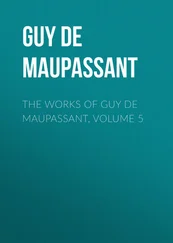According to current scientific ideas, energy is not an invisible force field coursing through the body, moving arms and legs and cooking up thoughts in the brain like some benign ghost dashing around pulling the levers of body and mind. The modern idea of energy is more like that of money. Money gives the capacity to buy things, coming in many forms, such as coins, notes, cheques, credit cards, bank accounts, bonds, gold etc. It can be used to buy many sorts of things, such as hats, houses and horses. Money allows the exchange of these things at a fixed rate, so that I can, for example, exchange a fixed quantity of coins for one horse. ‘Energy’ is a capacity for movement or change in a physical or biological system. It comes in many forms, such as chemical energy, electrical energy, or mechanical energy and can be used to ‘purchase’ many forms of change, such as movement, chemical change, or heating. Energy quantifies the exchange between these things at a fixed rate, so that, for example, a certain amount of heating requires the expenditure of a certain amount of chemical energy. One important difference between money and energy is, however, that money and monetary value are not exactly conserved. You may pay £100,000 for a house one year, selling it for £110,000 or £90,000 the next year without having altered or improved the house and this £10,000 does not suddenly appear or disappear from elsewhere in the economy. You can burn a £10 note and money simply disappears in smoke. Neither money nor monetary value is absolutely conserved: there is no Economic equivalent to the First Law in Thermodynamics. If there was, Economics would be easier but we might also be poorer. Energy is strictly conserved, as expressed by the First Law of Thermodynamics, which states that during any change of any sort the total amount of energy in the Universe stays the same. If you use one hundred units of energy to raise a rock one hundred feet in the air, on your return a year later lowering the rock to the ground one hundred units of energy will be released. It may not be released in wholly desirable ways – the energy may be released as heat, sound or work depending on how the rock is lowered, but when the energy released is added up the total will be one hundred units.
Money or monetary value is an abstract concept since it can reside in very different objects, such as coins or a bank account. Energy is similarly abstract since it is contained in many different types of thing, while not actually being them; energy rather is their capacity to produce movement or change. Energy is not in addition to the things themselves: it is rather as if an accountant were examining the situation, assessing the capacity for movement or change. For example if a rock is balanced at the edge of a chasm, it is possible to work out that if it were tipped into the chasm so much energy would be released as movement, noise, heat etc. Before the rock is moved, this energy does not reside in the rock or chasm any more than monetary value resides in coins or horses: this is because energy or monetary value are not tenuous forms of matter, but rather ways of quantifying the potential for change. Energy quantifies the capacity for movement or physical change within any particular situation.
Energy is like money in another way. Money does not determine how or when it is to be spent; that is determined by the people spending it. Similarly, a rock balanced over a chasm may have a lot of energy but this does not determine if or when the rock may fall. Rather it determines whether the rock can fall or not. The presence of a million dollars does not determine how or when it will be spent but does mean that x number of houses, y amount of strawberries or z number of horses could be bought. Similarly the presence of one million units of energy does not determine how or when the energy will be used, but it does mean that x amount of heat, y amount of movement or z amount of electricity could be produced.
The great American physicist Richard Feynman warned us of the abstract nature of energy in his famous Lectures on Physics :
‘It is important to realize that in physics today, we have no knowledge of what energy is . We do not have a picture that energy comes in little blobs of a definite amount. It is not that way. However, there are formulas for calculating some numerical quantity … It is an abstract thing in that it does not tell us mechanisms or reasons for the various formulas.’
So energy is not a thing or a substance. We can calculate it, using the figures for predictions, but have no idea what it is in itself. Energy seems just an abstract accounting concept like money quantifying the amount of movement that could be produced by a particular system. How boring! Yet, according to physics, energy is perhaps the most fundamental property of the Universe. Energy is the one constant conserved through all change. Everything can be created from or dissolved into energy, including even matter itself: which is demonstrated by atomic explosions and Einstein’s famous equation E = mc 2. In this rather abstract scheme of things, energy is the ultimate substance and fabric of the world, from which all else evolves and into which all else ultimately dissolves.
But energy itself does not produce movement or change. So what does? Newton said all movement or change is brought about by forces. In our lives we experience only two types: gravitation and contact forces. Gravitational force pulls everything towards the earth’s centre and causes all heavenly (and not so heavenly) bodies to attract each other. Contact forces occur when we push or pull something; when I lift a chair; when a car hits a lamppost; or when a volcano explodes. Gravitational force exists because every bit of matter is attracted to every other bit, causing them to accelerate towards each other. All the contact forces are different manifestations of one immensely powerful force: the electric force. Electric force is the force of attraction or repulsion between all charged matter. Gravitational force and electric force account for virtually all movement and change in our universe. There are two other forces known: strong nuclear force and weak nuclear force but their range of action is so small, they can only be observed by breaking open the nucleus of an atom. Thus nuclear forces have no apparent effect either on biology or our everyday lives.
Although gravitational force is important for large objects like us, it has no significance for small objects like cells. The electric force is – roughly – one thousand million million million million million million times stronger than the gravitational force and is the only force that matters at the level of molecules and cells. Gravitational force causes attraction – that is, two objects will accelerate towards each other. But the electric force causes either repulsion or attraction depending on whether the matter carries the same or different charges: opposites attract, likes repel. The electron carries a negative charge: the proton a positive charge. Everything, including our bodies, can be considered made up of different arrangements of protons and electrons. (There are also neutrons, but they have no charge, and behave like an electron and a proton stuck tightly together.) Everyday objects are made up of approximately equal numbers of electrons and protons. If this were not so, an excess of positive or negative charge would create a huge force pushing out (or exploding) the extra charge, leaving a roughly neutral group of electrons and protons. The power of the electric force is truly immense. If two people, standing at arm’s length, each had one per cent more electrons than protons in their bodies, they would be blown apart by an electric force sufficient to move the weight of the entire earth.
Читать дальше












